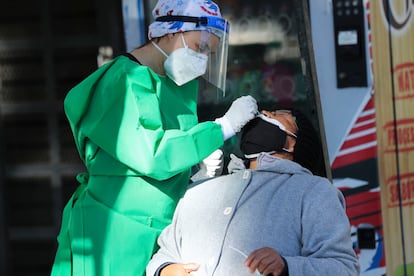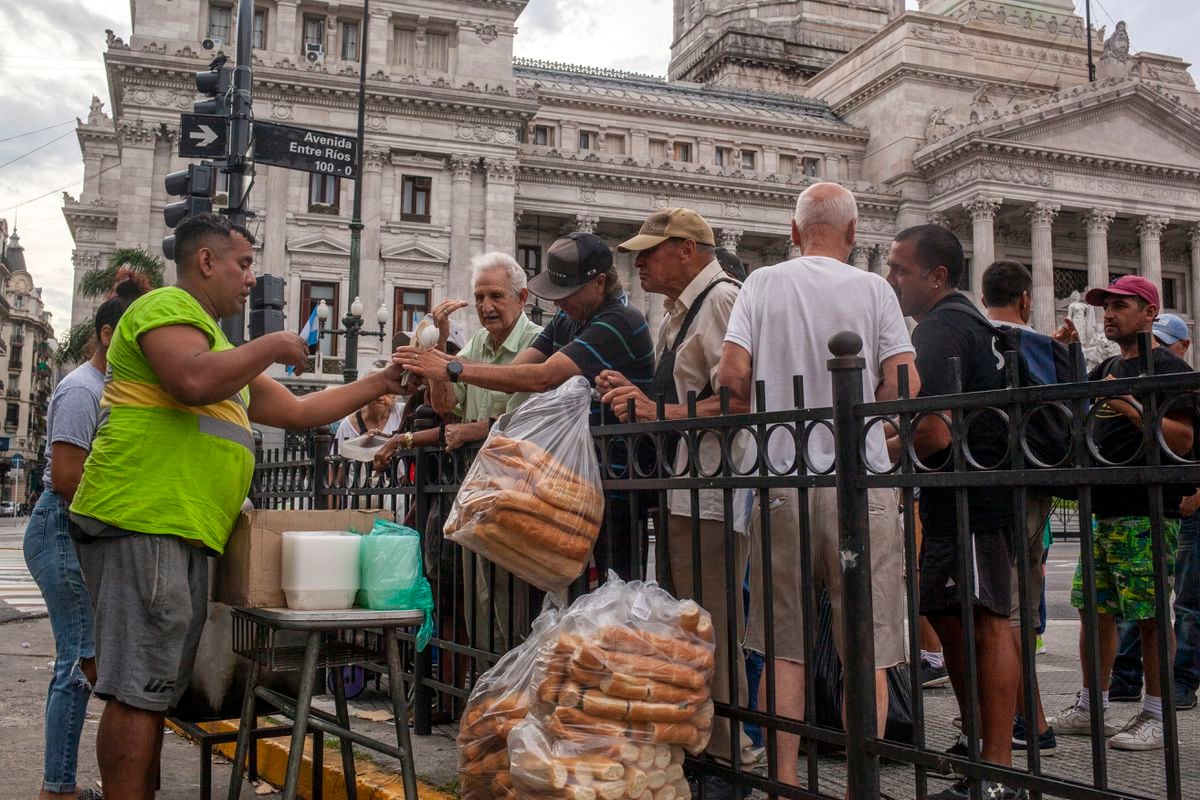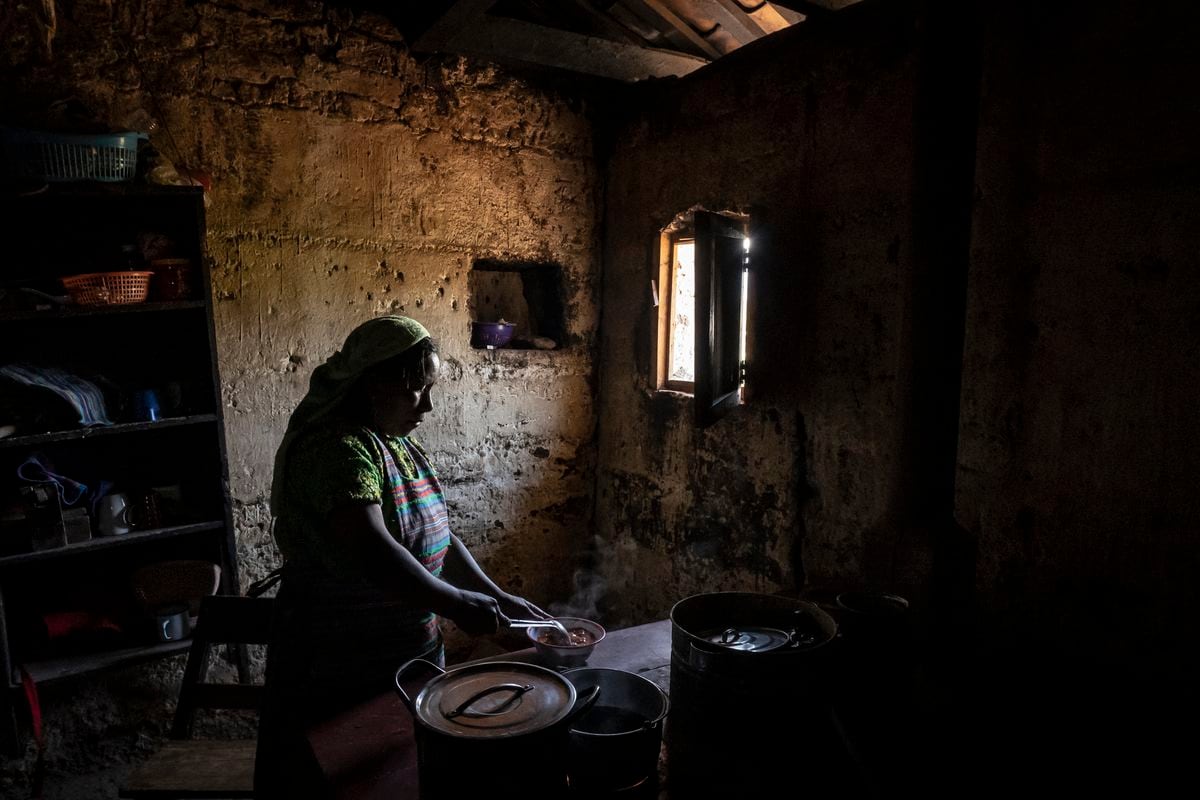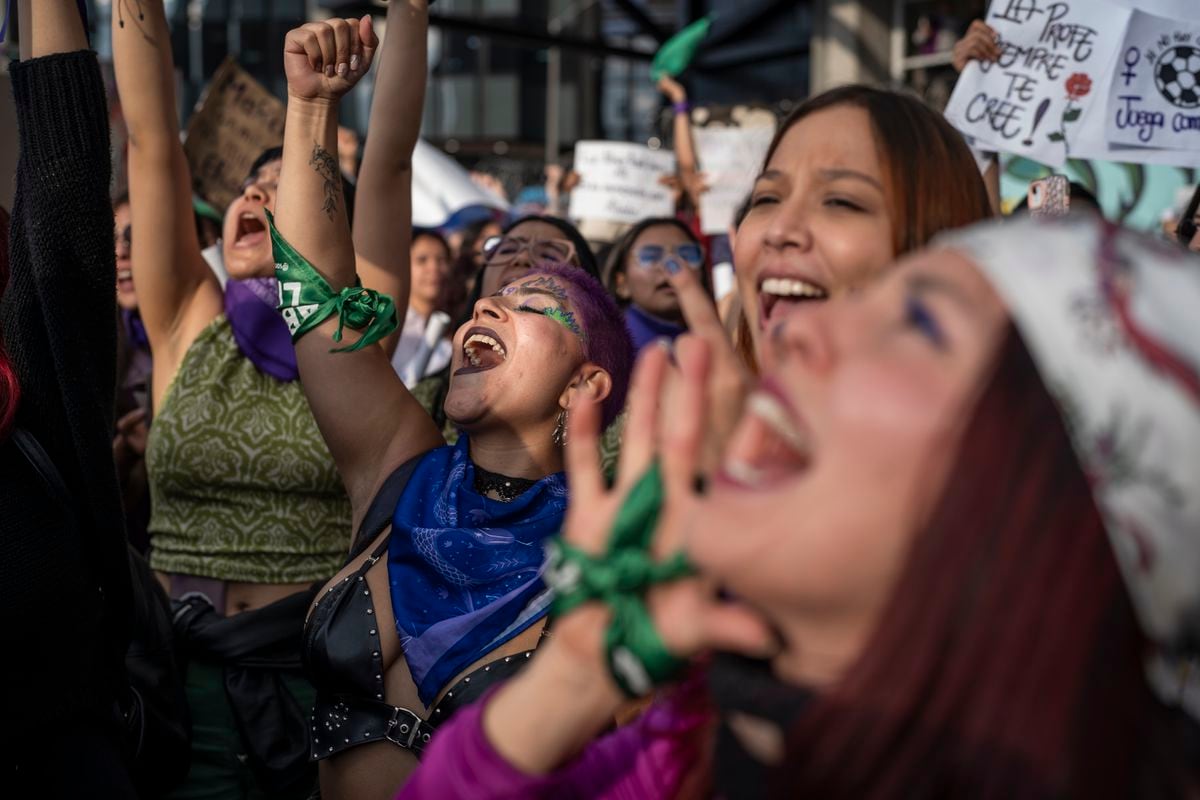Health personnel carry out a test to detect cases of coronavirus in Mexico.JORGE ALVARADO / ZUMA PRESS / CONTACTOPHOTO (Europa Press)
For the past two weeks, the world has come out of its penultimate reverie regarding the end of the pandemic. The South African scientists who discovered omicron, the new variant that could surpass all the previous ones and become the dominant one, took it out of it. In fact, its presence has already been confirmed in at least 20 countries. In many of them, although the confirmation came after the South African announcement, they are samples taken before those dates: when the borders were closed, omicron was already here.
Also in Latin America, one of the regions hardest hit by the epidemic so far with more than one and a half million confirmed deaths: almost 29% of the world total, compared to 8% of the total population. Brazil confirmed last Thursday the positive of two people who arrived from South Africa a day before the announcement of its health authorities. A third positive in São Paulo was given by a young man who arrived from Ethiopia: a country to which Brazil did not prohibit entry, unlike South Africa, Botswana and their neighbors in the southern cone of the continent.
The dispersion capacity of omicron is therefore confirmed.
The authorities of the region consider it inevitable.
Now the questions are focused on the effects that the variant can have on a continent whose protection walls against the subsequent waves are still half built.
But some are better grounded than others: while Brazil, Chile and more recently Argentina or Colombia have begun to reinforce the immunization of the population with reinforcements to the original vaccine schedule, other governments, particularly that of Mexico, have still not started .
Greater contagion, less immunity?
Early omicron data from South Africa seem to indicate that omicron is indeed catching up faster. Early analysis by the
Financial Times
data team
draws a steeper curve for this wave of contagions than for previous ones, dominated by delta, beta and the native variant. As the percentage of positive tests increases in parallel, it does not seem to assume that this is a statistical effect, but rather reflects the reality on the ground.
Ómicron was concerned from the beginning because he had a series of mutations that in previous variants had been confirmed as facilitators of contagion. This information, still preliminary, is a first test of how this genetic theory works at least in the South African context. Its particularities are a relatively low but not non-existent vaccination (around 25% of the population with the full schedule; without boosters), high past impacts of the virus (more than 260,000 excess deaths since May 2020; 1 of every 200 South Africans), and a population with high immunosuppression due to the fact that 20% of people between 15 and 49 years old are HIV-positive. For this context at least,Research by Dr. Julliet Pulliam (director of the South African DSI-NRF Center of Excellence in Epidemiological Modeling and Analysis at Stellenbosch University) and her team show an increased risk of reinfection, which would indicate that immunity acquired in the past does not it would be as effective against omicron as it had been until now. That is to say: its contagion speed would be at least partially due to its immune escape power.
Unknown severity
To what extent this evasion extends to defenses against serious disease remains an open question for the scientific community.
Again, the provisional South African data do not necessarily point to less severity: the increase in hospitalizations is occurring at a not inconsiderable rate, similar to that of cases in general.
Hope is then shifting towards the defenses built by humans during this year: vaccination, which in Latin America remains very uneven, exposing some countries much more than others to the impact of this or other variants.
To date, the information regarding how the vaccines that we are already using against omicron will behave is scarce and imprecise.
It is limited to statements and intuitions, sometimes apparently contradictory: while the CEO of Moderna at the beginning of the week indicated distrust, that of BioNTech (the company that has developed the vaccine together with Pfizer) indicated the opposite, especially in the protection against serious disease .
On Thursday, the South African Genome Surveillance Network was optimistic as well, but without presenting specific data for now.
Reinforcements in Chile and Colombia
While the world awaits more specific data from South Africa itself, the pharmaceutical companies, or other countries that have enough cases and analysis tools (Israel is a likely candidate to provide them), a question remains floating in a continent that still has to vaccinate half the population: if there is a certain risk that vaccines will work worse against omicron or against other future variants, why continue? In fact, what use would the vaccine booster, which is gradually becoming the standard, at least among the vulnerable population? To date, a vast majority of countries in the region are already implementing it, although with uneven progress, marked by availability but also by the start date:Those who began to inoculate later still do not have the need to rush with the reinforcements because the months in which the immune potency tends to drop, especially in vulnerable groups, have not yet passed. The most notable absence is the Mexican: only this week the czar assigned by Andrés Manuel López Obrador to face the pandemic, Hugo López Gatell, announced reinforcements for the elderly, and also for teachers. But it did not set a specific date for this important policy despite the fact that Mexico was one of the first American nations to start its inoculation campaign. Meanwhile, Chile has already put almost nine million third doses, Brazil exceeds 17, Argentina began to pick up pace during November, and several countries have completely opened the availability to all those over 18 years of age.
The question remains whether all past variants have produced defenses of the same quality in former virus hosts.
Dr. Pulliam's data for South Africa show that the majority of those reinfected there came from carrying delta.
This is on the one hand normal given that it was the wave in which the most cases were detected, but on the other hand it is surprising because it was also the most recent, and therefore more vigorous defenses could be expected.
More precise calculations are necessary to locate the denominator to know to what extent the incidence of omicron reinfections is higher or lower according to the previously covered variant, something potentially important for Latin America as it has had developments marked by idiosyncratic lineages (mu in Colombia , lambda in Peru, delta in Mexico).
New vaccines and treatments
In the extreme case that all existing defenses fail significantly, the world would still be left with notably more powerful tools than it had in March 2020. Current vaccines, for example, can be relatively easily adapted to eventual mutations. The estimates of the pharmaceutical companies go from 60 to 120 days to start up both the formula and the corresponding studies and, eventually, a manufacturing that promises more agile since there is already both the knowledge and the infrastructure for it. Furthermore, SARS-CoV-2 would not be the first virus with which we are forced to periodically update vaccines: every year we analyze the dominant strains of the virus that causes influenza in each place and make decisions regarding the vaccines to be administered. next year.
The crucial difference here, of course, is that the lethality of covid without vaccines is notably higher, which gives the whole process a much greater urgency. It is in this pressure that equality and coordination that would be desirable in the distribution of vaccines is dissipated: countries that can expand availability within their borders prefer to do so rather than outside. Thus, while the United States immunizes children and has already given practically 40 million booster doses, countries like Guatemala or Nicaragua have barely covered a quarter of their adult citizens with the initial doses.
Perhaps aware of the increased risk of the emergence of variants such as omicron when the virus is left wide spaces in which to infect and mutate, in recent times the administration of Joe Biden has considerably increased its pledges of donations to third countries up to one billion. Of these, 34 million had already arrived in Latin America just before the emergence of omicron, according to the accounts of the Council of the Americas. In the distribution, yes, geostrategic criteria are guessed, not just epidemiological. Also income, especially those that arrive via the multilateral COVAX mechanism, thanks to which countries like Honduras have been able to cover a large part of their immunization processes.
To these figures we must add the indirect but very real donation of an undetermined number of doses through the lax policy of vaccinating non-residents that the US federal government has maintained throughout 2021, and from which many citizens have been able to benefit. from Latin America who could afford to move, or who had some kind of relationship, professional or family, present or past, with the United States.
Nor was the decision to support the temporary suspension of patents for vaccines at the World Trade Organization, announced in May this year, but which has not yet been achieved in an agreement within the multilateral forum due to opposition from other countries. The local development articulated by the governments of Mexico and Argentina with AstraZeneca was also promising, and in fact it has managed to provide 70 million doses to the region, but far from the initial goal of 250 million by 2021.
These examples demonstrate that there are no obvious shortcuts to contribute to the reasonable goal of more even immunization of Latin American and global citizens. It remains to be seen if it will be the same with the new antivirals, whose advanced studies promise results in reducing hospitalizations (especially the one developed by the pharmaceutical company Pfizer, although the scientific community is still awaiting open final results) with relatively accessible treatments that are available from the beginning. they are inserting into a pool of patents accessible to generic manufacturers in lower-income nations.
These considerations show in any case that the fight against the pandemic becomes more complex as it progresses: “stay home” or “let's get vaccinated” stop working by themselves after two years and inevitably become more complex messages. : who can stay at home and who cannot, who has access to what vaccination guidelines or not, and now also what kind of mutations are we going to face with all this.
Ómicron is next, but it seems unlikely that it will be the last.
Subscribe here to the EL PAÍS América newsletter and receive all the informational keys of the current situation in the region





/cloudfront-eu-central-1.images.arcpublishing.com/prisa/GSAG3AFDE5GZ7CR5RU42LT63UM.jpg)
/cloudfront-eu-central-1.images.arcpublishing.com/prisa/AWQDFA55JRFZ7EFY4XGGS3VAVQ.jpeg)
/cloudfront-eu-central-1.images.arcpublishing.com/prisa/ZU5KUJFBSRGVVM2SXJTZBZP3XI.jpg)

/cloudfront-eu-central-1.images.arcpublishing.com/prisa/2C5HI6YHNFHDLJSBNWHOIAS2AE.jpeg)





